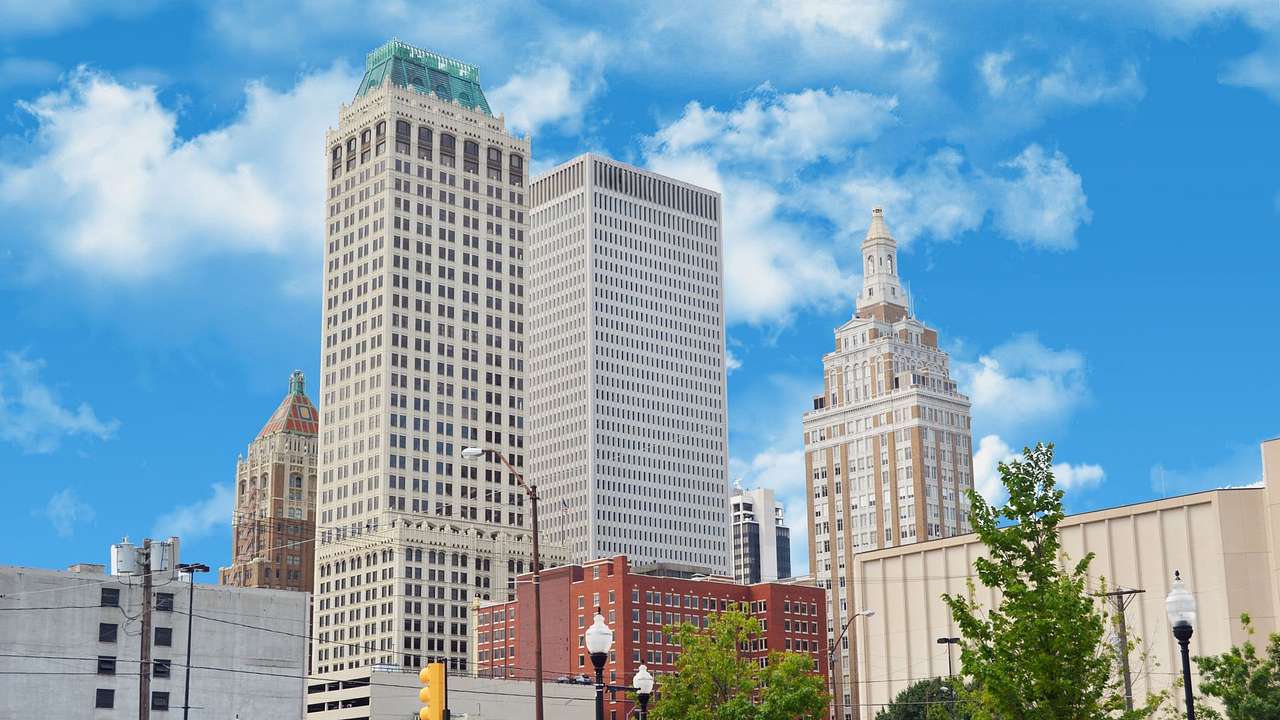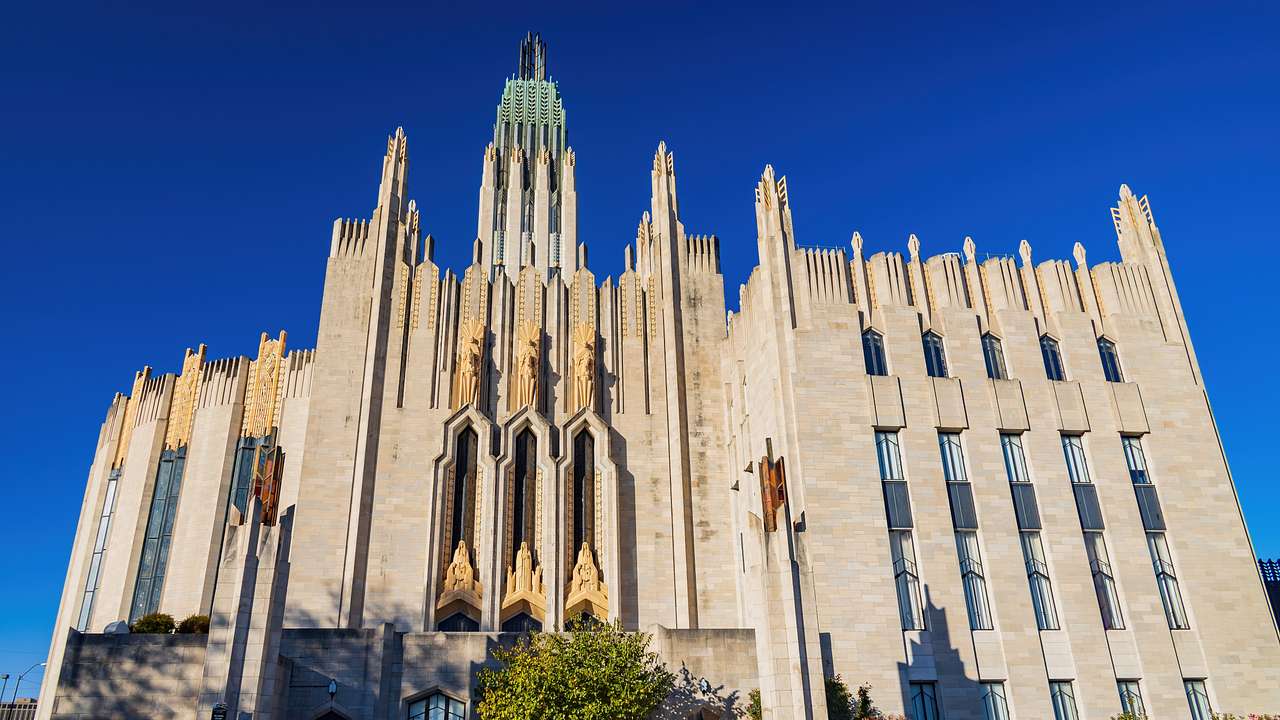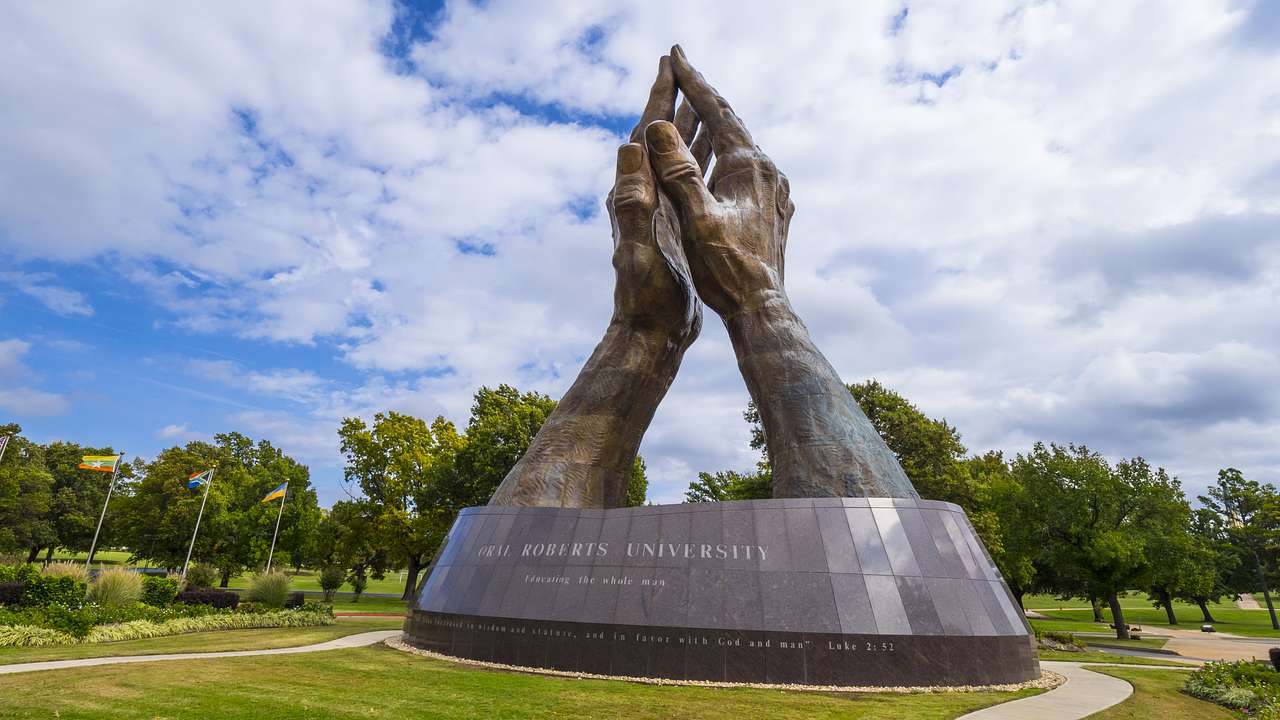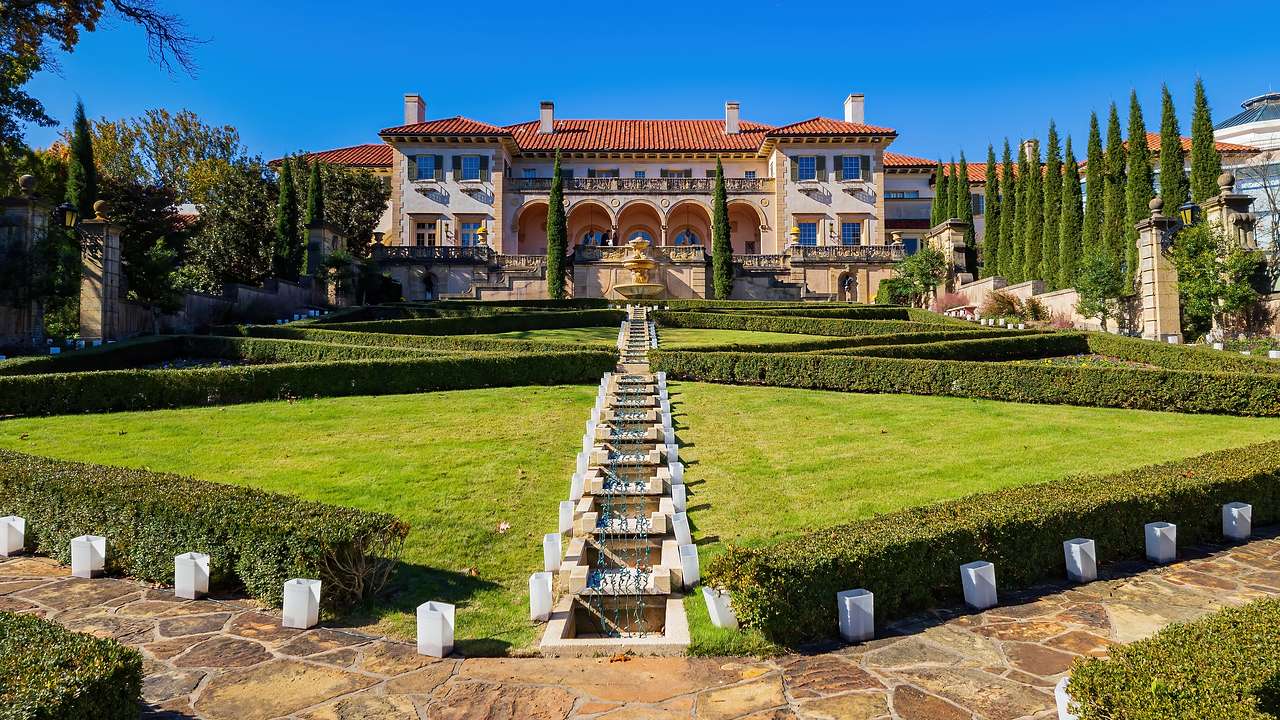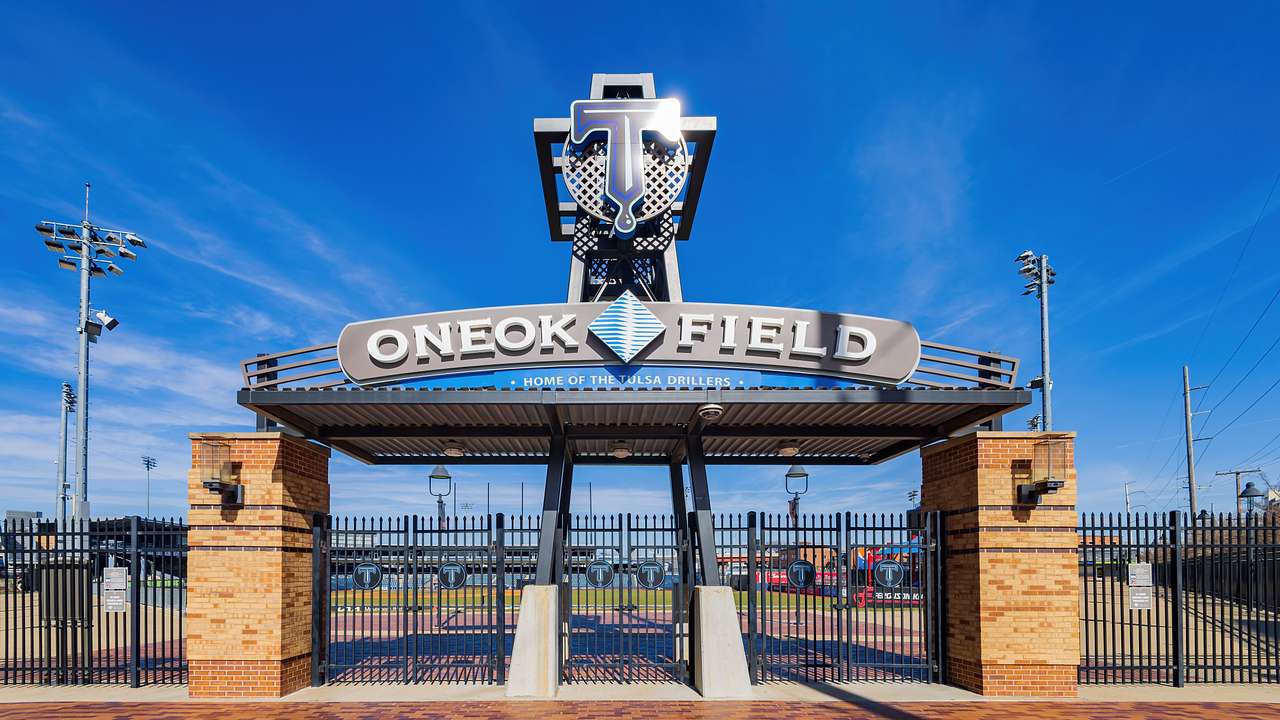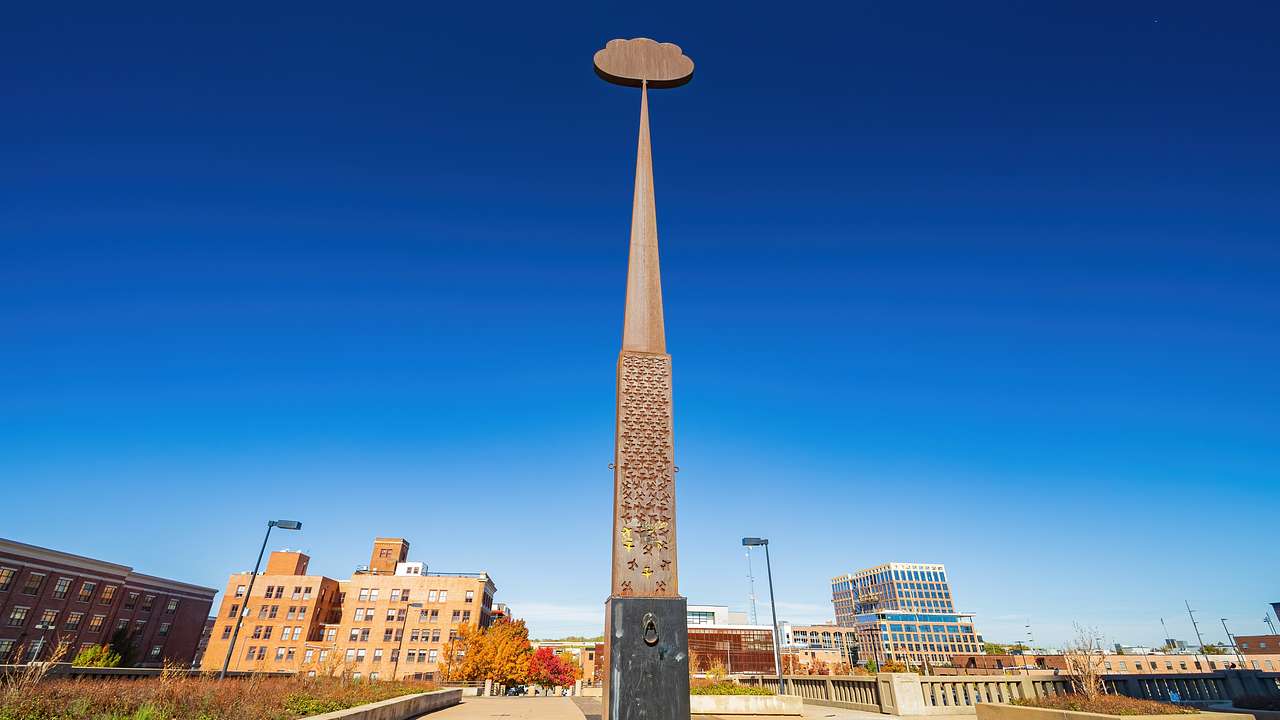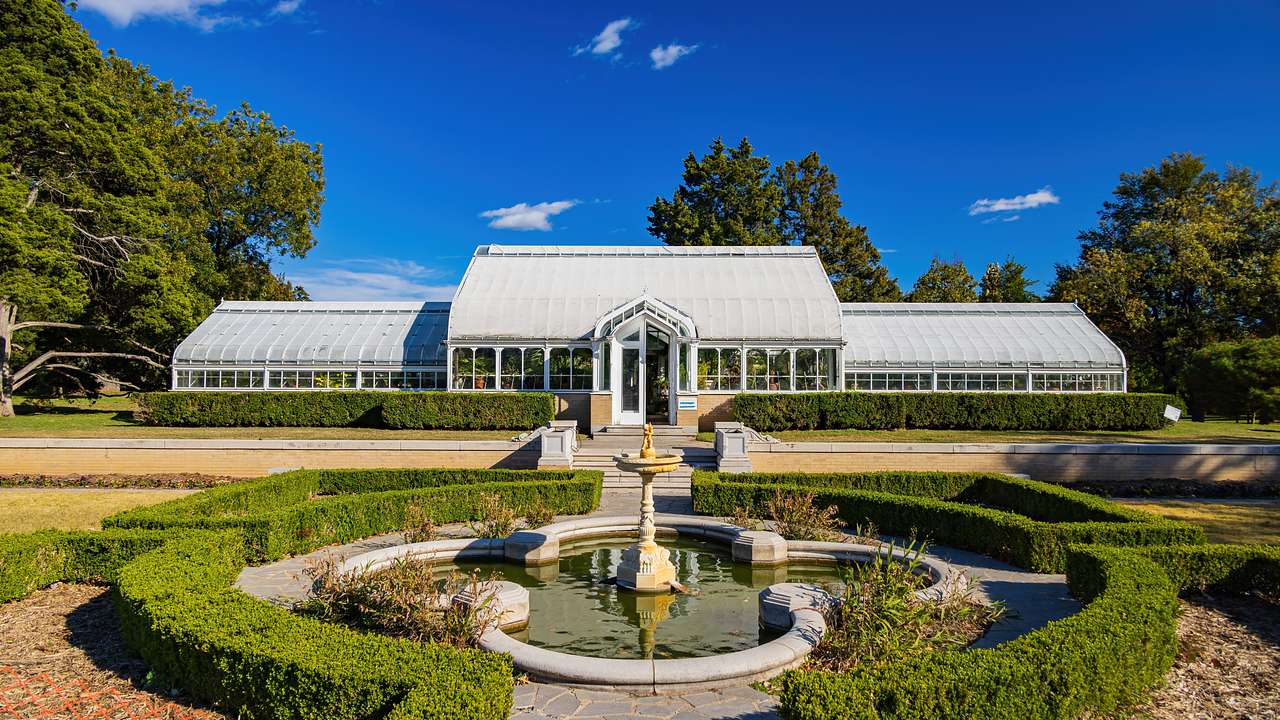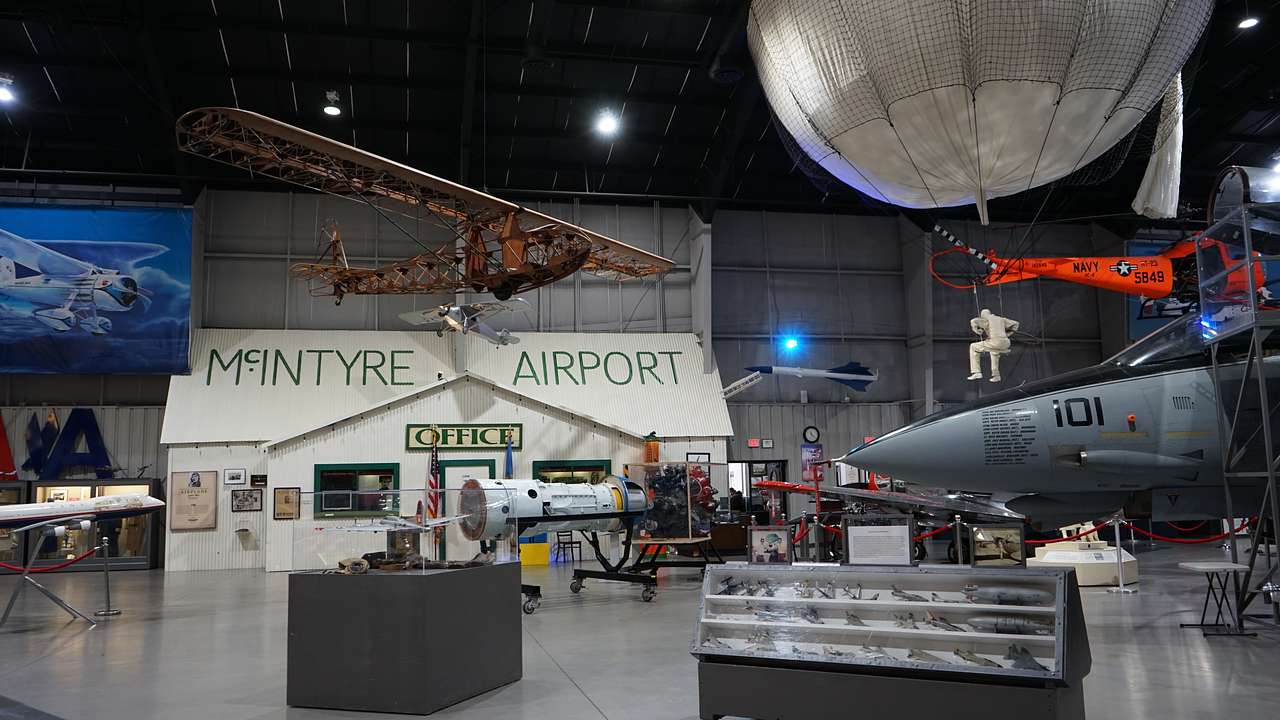15 Landmarks in Tulsa You Have to See
Destguides may receive commissions from purchases made through affiliate links in this article.
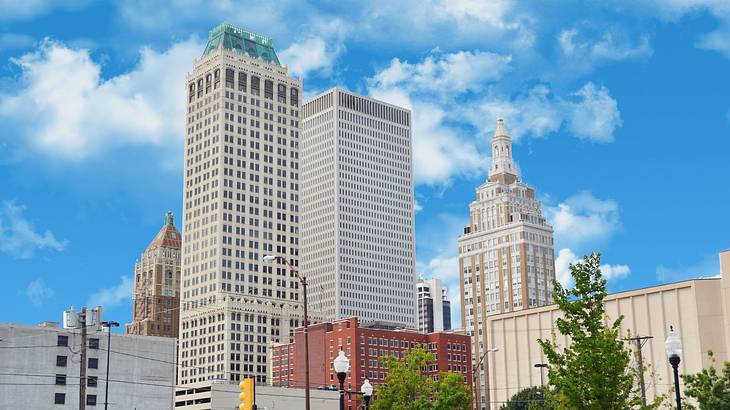
Tulsa, located in northeast Oklahoma along the Arkansas River, is the state's second-largest city and one of the most historic destinations in the region. Tulsa saw rapid growth in the early 1900s, rising in prominence thanks to the discovery of oil and the development of the local petroleum industry.
Tulsa has a lot to see and do for a city with a population of fewer than 500,000. From the hard-to-miss Golden Driller Statue, which rises 75 feet above the Tulsa Expo Center, to the Greenwood Cultural Center and its tribute to the city's tragic 1921 racial violence, there's something for every type of visitor.
That's without mentioning the Center of the Universe, a mysterious Tulsa landmark that amplifies any noises within its circle. Or the strange cave-shaped house that allegedly served as a speakeasy. But those are just some of the 15 exciting landmarks in Tulsa you'll learn about by the end of this helpful guide.
15 Tulsa Landmarks
- Boston Avenue United Methodist Church
- Golden Driller Statue
- Praying Hands
- Greenwood Cultural Center
- Philbrook Museum of Art
- Keystone State Park
- Oneok Field
- Mt Zion Baptist Church
- The Center of the Universe
- The Outsiders House Museum
- Woodward Park and Gardens
- Gathering Place
- Tulsa's Oldest House
- The Cave House
- Tulsa Air and Space Museum & Planetarium
Tulsa Landmarks Video
Check out our highlights video of Tulsa landmarks.
Tulsa Landmarks Map
A map of Tulsa landmarks. Use the map to explore all of the points of interest.
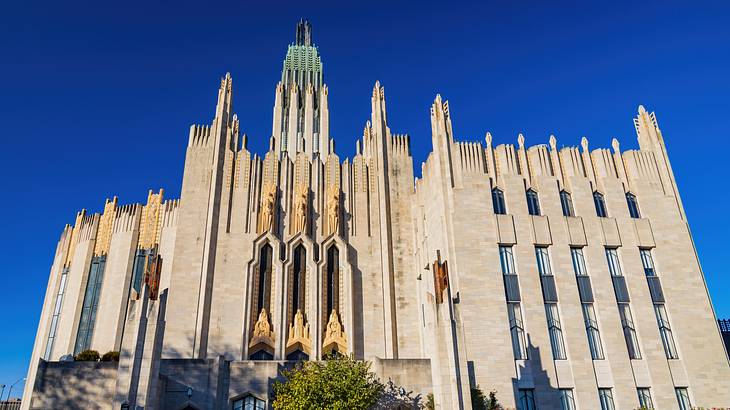
Boston Avenue United Methodist Church
Completed in 1929, the Boston Avenue United Methodist Church is considered Tulsa's finest example of Art Deco architecture. With its tower reaching a height of 225 feet and including 15 floors, the church is a downtown landmark that's difficult to miss.
The Boston Avenue United Methodist Church is constructed with limestone from Indiana and Granite from Minnesota. Its design also features metal, stained glass, and even terra cotta sculptures around the exterior. The church is open for visitors throughout the week, with guided tours on Sundays following the morning service.
Golden Driller Statue
Standing in front of the Tulsa Expo Center, the Golden Driller Statue is a 75-foot golden statue of an oil worker. Oklahoma's connection with the oil industry runs back to the mid-1800s.
One of the fascinating facts about Oklahoma is that it was the largest producer of US oil for many years during the early 20th century. The Driller pays homage to this industry and the oil industry workers and the progress made through their efforts.
Built for the 1959 International Petroleum Expo, the Golden Driller Statue was so popular that its creator, Mid-Continent Supply Company, donated the monument for permanent display. This landmark is also the fifth tallest statue in the United States!

Praying Hands
Located in South Tulsa on the campus of Oral Roberts University, Praying Hands is a 60-foot monument billed as the most enormous praying sculpture in the world. The statue, which was installed in 1980, is undoubtedly one of the heaviest monuments in Tulsa: it's made from bronze and weighs more than 60,000 pounds.
The models for the Praying Hands sculpture were university founder and televangelist Oral Roberts and his son, Richard. Each man had one of their hands modeled for the statue, which was subsequently cast in Mexico.
Greenwood Cultural Center
The Greenwood Cultural Center is a museum and community space which preserves and educates the public on the history of Tulsa's Greenwood District. Greenwood, once an affluent African-American neighborhood nicknamed Black Wall Street, was almost entirely destroyed by white supremacist rioters in 1921.
Established in 1995, the Greenwood Cultural Center is home to a permanent exhibit on the Tulsa race riot and photographs of Greenwood throughout the years before and after. The center also regularly hosts educational events and seminars. The center's Opal L. Dargan Renaissance Hall is also the site of community meetings, celebrations, and performances.

Philbrook Museum of Art
Tulsa is known for having many cultural attractions. In fact, the Tulsa nickname of the Cultural Capital of Oklahoma was even created due to the city being home to many of the state's top cultural places, like museums.
One of the most famous of these museums is the Philbrook Museum of Art. Located in a 1920s Italian Renaissance villa once owned by early oil tycoon Waite Phillips, the landmark is a sprawling cultural institution that includes 25 acres of outdoor gardens.
Phillips donated his home, named Villa Philbrook, to the City of Tulsa in 1938, with the Philbrook Museum of Art opening the following year. The Philbrook boasts a collection of more than 16,000 pieces. The museum's primary focus is on Native American artwork. However, it also houses permanent exhibits on European, African, and other art forms.
Keystone State Park
Keystone State Park sits west of Tulsa off of US Route 412 outside of Sand Springs. The park is a 714-acre natural space around Keystone Lake, which branches from the Arkansas River. It's a popular destination for swimming, boating, and fishing and also offers camping sites and nearly two dozen fully-furnished cabins for rent.
A picturesque outdoor area just 20 minutes from Downtown Tulsa, Keystone State Park is one of the most scenic landmarks in Oklahoma and well worth visiting for the day. If you want to snag a cabin, however, make sure to book early!
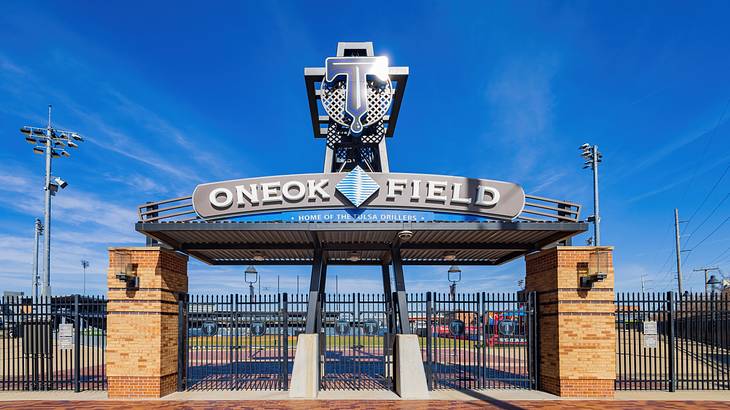
Oneok Field
Oneok Field is a Minor League Baseball stadium in Tulsa's Greenwood District. It serves as the home of the Tulsa Drillers, having replaced the aging Drillers Stadium in 2010. The United Soccer League's FC Tulsa has also used the field since 2015.
One of the top Tulsa, Oklahoma, tourist attractions for sports lovers, Oneok Field also puts on weekend fireworks displays and has a playground and splash pad for kids. The stadium gets its name from Tulsa-based natural gas company Oneok, the state's largest oil and gas producer.
Mt Zion Baptist Church
Located within the Greenwood Historical District, Mt Zion Baptist Church is one of the well-known buildings associated with the 1921 Tulsa Race Massacre. First constructed between 1916 and 1921, the original church building was open for less than two months when white supremacists destroyed it on the morning of June 1, 1921.
Following the massacre, church members chose to repay the debt on the original building, despite no legal obligation to do so. The current Mt Zion Baptist Church building was completed in 1952 following years of fundraising and financial hardship by the congregation.

The Center of the Universe
Is it really the Center of the Universe? No one can say for sure. But what is known about this mysterious spot on the Boston Avenue Pedestrian Bridge is that noises from within the circle resonate louder than they originally were.
Delineated by a large stone circle on the ground and surrounded by planters and bench seating, the Center of the Universe is an acoustic phenomenon that experts can't fully explain. This mystery makes it one of the unique Tulsa, OK, landmarks that everyone visiting the city needs to check out.
The Outsiders House Museum
Located northeast of Downtown Tulsa in the neighborhood of Crutchfield, the Outsiders House Museum pays tribute to its namesake book by S.E. Hinton and the 1983 film adaptation by Francis Ford Coppola.
The property served as one of the primary filming locations for the movie. Exhibits include photographs and memorabilia from filming and over 500 different printings of the novel.
The site of the Outsiders House Museum was purchased by musician Danny Boy O'Conner for 15,000 USD in 2016. Following extensive renovations funded by public and private sources, the landmark officially opened as a museum and tourist attraction in August 2019.
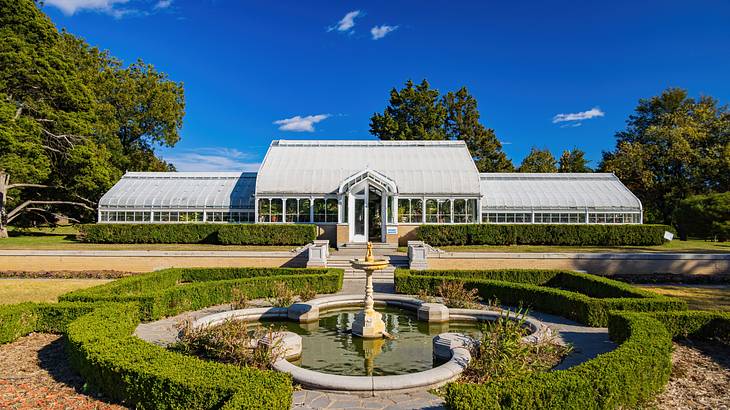
Woodward Park and Gardens
The 45-acre Woodward Park and Gardens is one of the city's best-kept outdoor natural areas. It's located southeast of central Tulsa, just minutes from the Philbrook Museum of Art. The park features everything from tropical plants and cacti to a garden with over 9,000 bushes representing over 250 varieties of roses.
Woodward Park and Gardens is also home to the Travis Mansion. With a history dating back to 1919, the mansion is now used as the Tulsa Garden Center offering educational seminars and meeting space for nature-related organizations. Additionally, Woodward Park and Gardens was added to the National Register of Historic Places in 2014.
Gathering Place
Gathering Place is a natural space and community park occupying nearly 70 acres along the Arkansas River. Opened in 2018, much of the project's funding came from Tulsa billionaire George Kaiser and the George Kaiser Family Foundation.
One of the landmark's biggest draws is the Chapman Adventure Playground, a five-acre play area designed to meet the needs of kids of all ages and physical abilities. Curious children will enjoy the Ramble Sensory Garden and its hands-on approach to fun and learning.
Don't worry, adults: you'll love the scenic river views, numerous unique art installations, and frequently scheduled events.

Tulsa's Oldest House
Tulsa's Oldest House is one of the most historical sites in Tulsa, Oklahoma. The home, constructed in the early 1880s, is a simple wooden structure on a stone foundation in the city's Owen Park Historic District.
The landmark was originally home to Reverend Sylvester Morris, who was killed by police when they mistook him for a liquor smuggler. Tulsa's Oldest House was built on North Cheyenne Avenue, where it remained for nearly a century. It was moved to its present spot next to Owen Park in 1976 following damage by vandals.
The Cave House
Situated on Charles Page Boulevard across from Newblock Park, the Cave House is a unique Tulsa attraction opened initially by local businessman Joseph Koberling as a cave-themed restaurant in 1926. Rumor has it that the site also served as a speakeasy pouring alcohol during Prohibition.
After operating as a restaurant, the Cave House was home to many eclectic residents over the decades. The current owner has decorated the home with historical items and distinctive accents and opened the site for guided public tours.

Tulsa Air and Space Museum & Planetarium
Situated adjacent to the Tulsa International Airport, the Tulsa Air and Space Museum & Planetarium highlights the history of aerospace with nearly 20,000 square feet of exhibits. The center has been open since 1998 and houses vintage aircraft, hands-on learning activities, and memorabilia commemorating Tulsa's place in aviation history.
The James E. Bertelsmeyer Planetarium was added in 2006. It hosts several shows throughout the day from Tuesday to Saturday. The Tulsa Air and Space Museum & Planetarium is one of the best Tulsa, Oklahoma, landmarks for kids to visit and explore.
In Summary
Until the late 1800s, Tulsa was primarily occupied by Native Americans, with some of the best examples of native craftsmanship and history on display at the Philbrook Museum of Art. By the early 20th century, the discovery of oil in the area had turned Tulsa into a booming regional leader, a proud history represented by the city's massive Golden Driller Statue.
But not all of Tulsa's past has been prosperous: the city was home to some of the worst racial violence in the nation's history during the Tulsa Race Massacre in 1921. Mt Zion Baptist Church, one of the buildings destroyed during the unrest, was rebuilt and now stands as a testament to the community's perseverance.
From the eccentric Cave House to the outdoor paradise of Keystone State Park, the city of Tulsa and its surrounding communities offer some of Oklahoma's best and most unique attractions.
Want to keep exploring?
Subscribe for discounts on tickets and hotels and our latest guides.
Thank you for subscribing
We will be in touch soon with discounts on tickets and hotels and our latest guides.
Want to keep exploring?
Subscribe for discounts on tickets and hotels and our latest guides.
Thank you for subscribing
We will be in touch soon with discounts on tickets and hotels and our latest guides.

